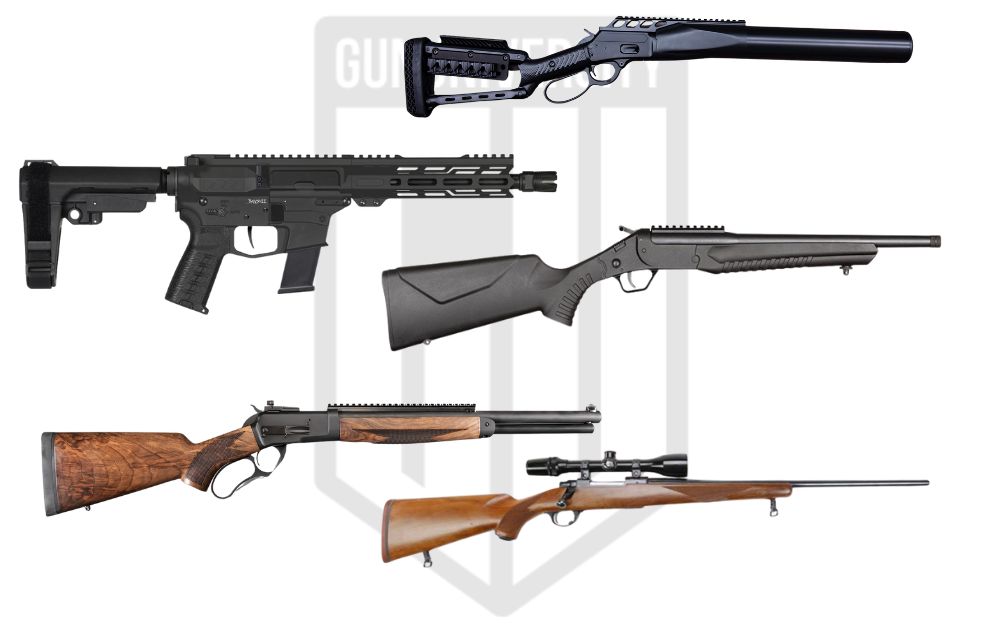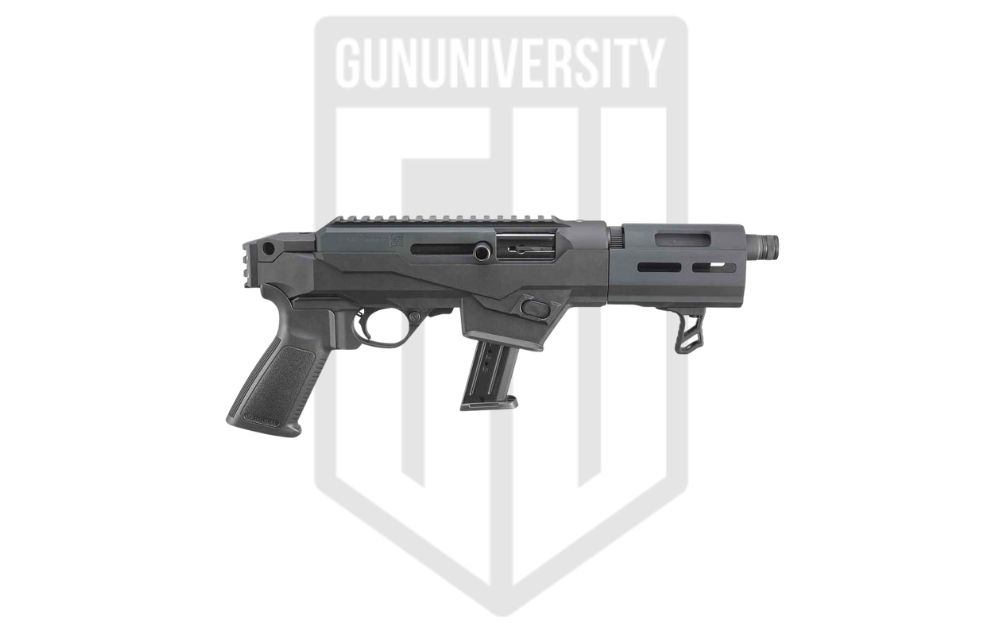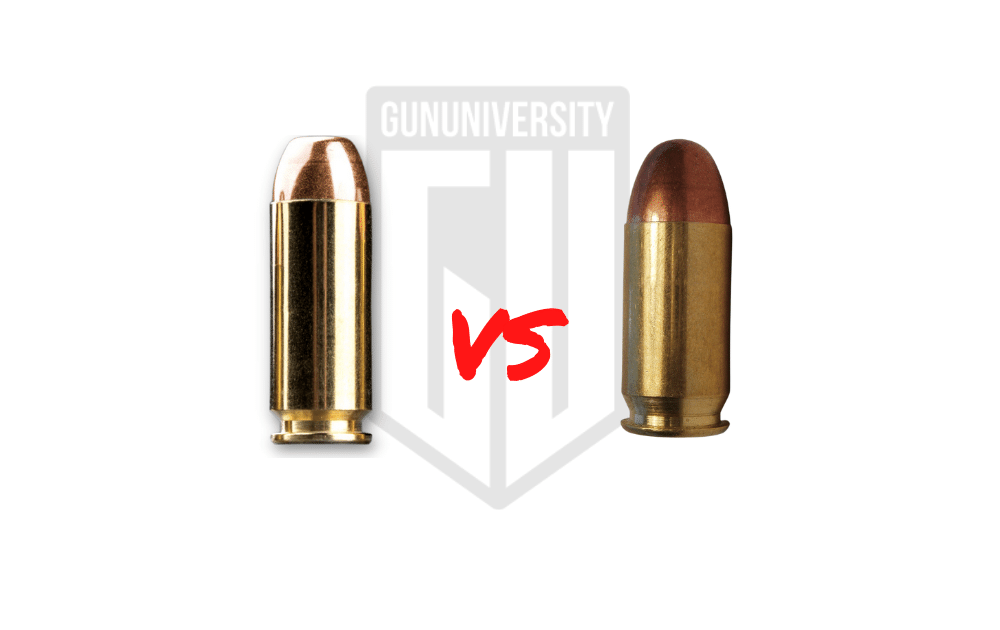7 Best First Aid Kit – Being Prepared
One of the most important items you could have in your range bag as a shooter is a good first aid kit. Accidents happen, especially when you are dealing with guns, so having a well-stocked first aid kit with medical supplies is always a good idea.
But while first aid kits with general first aid supplies are widely available, finding the right kit for shooters can be a bit of a challenge considering that you are going to need some specialized material for gunshot wounds. That’s why I put together this comprehensive list of the 7 best first-aid kit for folks who shoot. Keeping in mind that every shooter is different, I’ve compiled several kits with a variety of first aid supplies so you can find the right fit for you. Here’s how I tested the kits on my list.
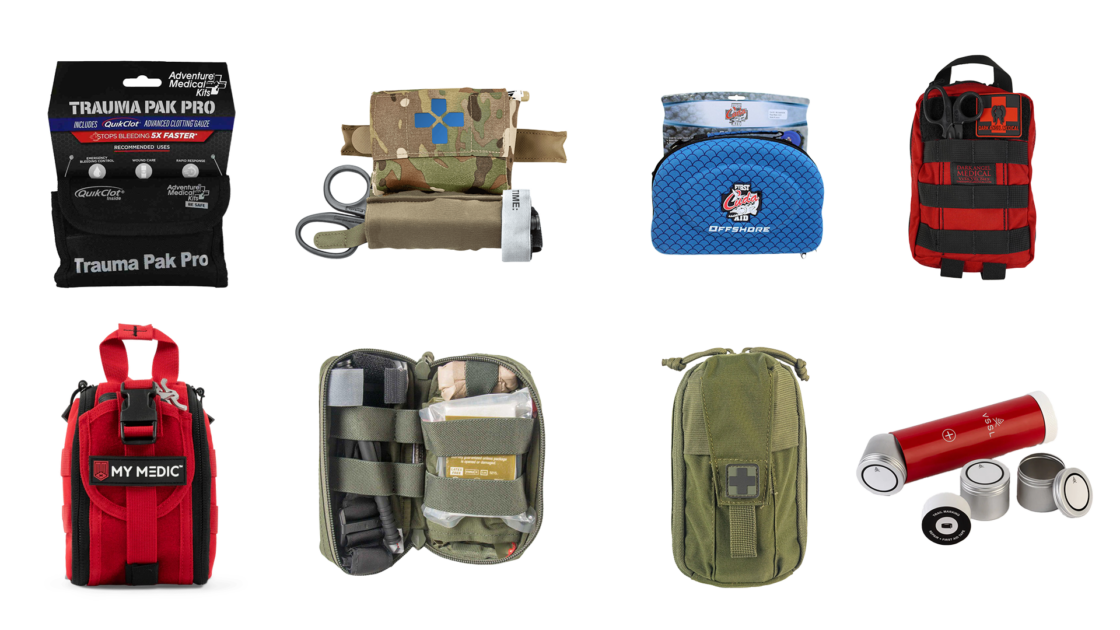
How I Chose The Best First Aid Kit
As a gun enthusiast and writer, I’ve written a whole bunch of articles on all topics related to guns from gun safety to accessories, so I’ve had the opportunity to test out several different first aid kits. However, I really wanted to make sure that I was not missing anything because these are life-saving items.
So I hit up one of my friends who is an MD and had a chat about the best first aid kit and its components. He also graciously agreed to review my article for accuracy, so I’m able to able to put together a comprehensive kit for shooters. Let’s get right into it.
Our List of the Best First Aid Kit Options
Here’s my list of the best first aid kits.
The Best First Kits
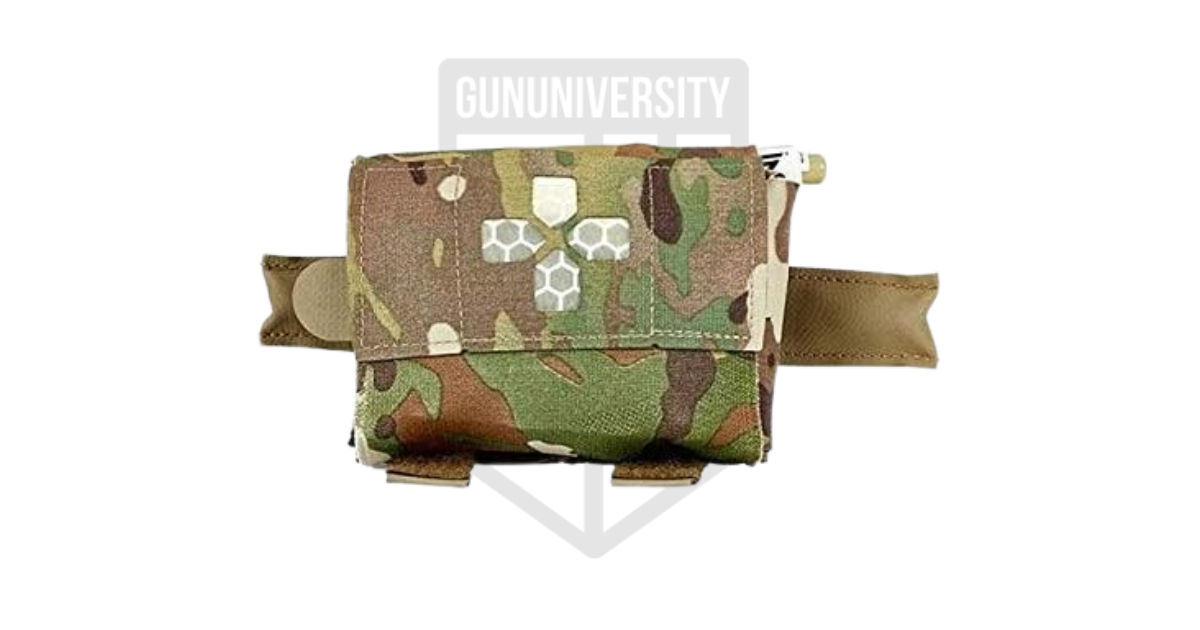 |
| Buy on Amazon | |
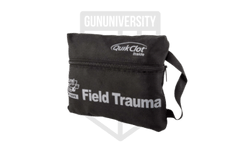 |
| Check Price | |
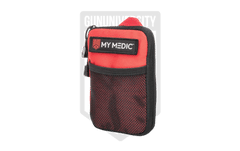 |
| Check Price | |
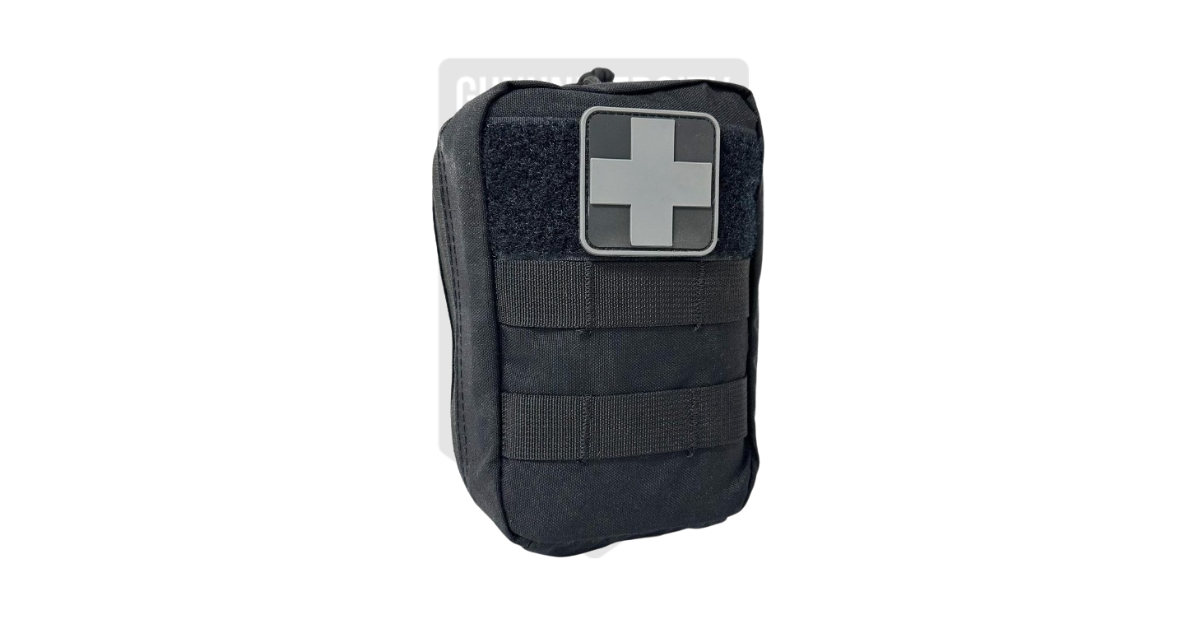 |
| Buy on Amazon | |
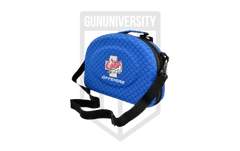 |
| Check Price | |
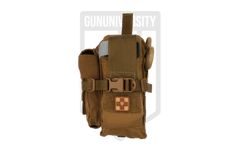 |
| Check Price | |
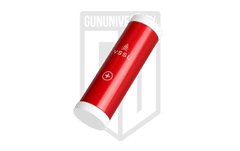 |
| Check Price |
If you want to read a review of a specific kit, you can click on the name. These are my picks for the best first aid kits.
- Blue Force Gear – Micro T.K.N.
- Adventure Medical – Field Trauma Kit
- My Medic – Range Medic Kit
- North American Rescue – T.O.R.K.
- Cuda Offshore First Aid Kit
- Dark Angel Medical – DARK Trauma Kit
- V.S.S.L. First Aid Kit – Minimalist
The Best First Aid Kit Reviews
The kits listed here are premade and provide you with a basis for a first aid kit. We’ll talk about building your own at the very end.
Blue Force Gear – Micro T.K.N. Review
Blue Force Gear – Micro T.K.N. ranks as the top pick among the best first aid kits out there in my ranking and here’s why. What I love about it is the balance it strikes between being minimalist and comprehensive. It takes the concept of quick accessibility to a whole new level, especially when you’re in a situation where every second counts.
The way this kit is structured is just genius. Its outer layer acts like a protective shield, keeping everything intact. Pulling out the inner component is a breeze, thanks to the thoughtfully designed elastic bands that keep all the gear neatly in place. That quick, easy access can be a game-changer, especially in urgent situations.
What really sets this kit apart is the variety it offers. Blue Force Gear provides options from Basic to Pro and Advanced kits, each packed with enough supplies and top-notch medical equipment to handle a range of situations. Plus, it’s customizable and modular, letting you add extras like a tourniquet hanger if needed.
It’s like they’ve anticipated every possible scenario and packed it into this compact, sturdy kit. For anyone looking for a minimalist option without compromising on preparedness, this is hands down the way to go.
Blue Force Gear – Micro T.K.N. Pros and Cons
- Easy for E.D.C. carry
- Modular
- Ambidextrous
- Minimalist offers less gear
Adventure Medical – Field Trauma Kit Review
My go-to for hiking adventures is the Adventure Medical Kits Field Trauma Kit. As a company, Adventure Medical Kits is known for producing high-quality, reliable first aid gear, and this particular kit is a close second on my list of best first aid kits due to its compact design and comprehensive offerings. I always keep it in my car. This kit comes with essential bandages, wound care items, bug bite treatment, and an invaluable first aid manual for wilderness wound care. What’s impressive is its weight—just a pound—which matters significantly when every ounce counts on the trail.
The kit’s pouch design, featuring a convenient top strap, ensures quick access when needed. While it’s well-stocked, I find adding a splint and tourniquet complements it perfectly for more serious situations. The brand’s reputation for top-notch gear is evident in the quality of the included items packed into this compact kit. It strikes a perfect balance between being lightweight and including high-quality gear, a crucial factor for any hiker.
For me, the Adventure Medical Field Trauma Kit earns its place as second due to its balance between weight and functionality. I ranked it lower than the Blue Force Gear one as it doesn’t come with a T.Q. That said, with this kit, I’m well-prepared for common hiking mishaps without weighing down my pack excessively.
Adventure Medical – Field Trauma Kit Pros and Cons
- Lightweight
- Excellent wound care manual
- Affordable
- No T.Q. or Splint
My Medic – Range Medic Kit Review
I’ve spent quite a bit of time around firearms, whether instructing, shooting regularly, or just hanging out at the range. It’s a no-brainer to have a top-notch medical kit handy. The My Medic Range Medic Kit holds up its reputation well. It’s not just about gunshot wounds; it covers the small mishaps that happen in the midst of all the action.
This kit doesn’t hold back—Quikclot gauze, compression bandages, chest seal, gloves, and even a complete burn treatment kit. It’s like a Swiss Army knife for first aid. And the way it’s organized, especially with its MOLLE compatibility, makes access a breeze. Nobody wants to fumble around in an emergency.
Now, here’s the kicker. It’s a near-complete solution, but I’d trade out the T.C.C.C. tourniquet for a C.A.T. Gen 7. That’s the only tweak it needs. Otherwise, it’s got everything you need to keep the day rolling smoothly at the range.
This kit secures its spot in the top tier, landing third among the best options. Its comprehensiveness, organization, and versatility make it a solid choice, but that one adjustment keeps it just shy of the absolute top.
My Medic – Range Medic Kit Pros and Cons
- Excellent Gear Selection
- Modular Pouch
- Well designed
- No TCCC approved tourniquet
North American Rescue – T.O.R.K. Review
I’ve ranked the North American Rescue T.O.R.K. as the fourth-best first aid kit, and here’s why. As an outdoor enthusiast who values preparedness, the T.O.R.K. caught my attention with its Tactical Operator Response Kit acronym. North American Rescue (N.A.R.) has a stellar reputation for crafting top-tier medical gear, like the renowned C.A.T. Gen 7 T.Q. and the HyFin chest seal, both included in the T.O.R.K.
What sets the T.O.R.K. apart is its comprehensive design tailored for tactical applications. Easily attachable to a plate carrier or battle belt, this all-in-one kit ensures quick access to essential items for handling traumatic injuries. The well-designed pouch, with internal elastic straps, allows for easy and secure gear access—a crucial feature in high-stress situations.
N.A.R.’s commitment to quality is evident in the ample supply of gauze, bandages, T.Q., and chest seal provided in the kit. The T.O.R.K. stands out as a well-stocked, plug-and-play solution, living up to N.A.R.’s reputation for producing reliable and innovative medical gear. Despite its comprehensive contents and tactical focus, in comparison to the top three kits, it might fall slightly short in terms of versatility for broader usage scenarios.
For those seeking a robust and easily accessible first aid kit designed for tactical scenarios, the T.O.R.K. is a great choice in the lineup of top-rated kits.
North American Rescue – T.O.R.K. Pros and Cons
- Simple but effective
- All High-Quality Goods
- Excellent Pouch Design
- Needs Quikclot Gauze
Cuda Offshore First Aid Kit Review
When it comes to water activities, safety is non-negotiable. The Cuda Offshore First Aid Kit sits comfortably in my top five for a reason. While it might not suit a professional charter service, for individual or family outings on the water, it’s a lifesaver – literally.
This kit’s waterproof container keeps everything pristine, a must for maritime adventures. From dealing with accidental hooks to the essentials for sunburns and common injuries, it’s got a solid variety packed in.
What really nudges it to the fifth spot on my list is its family-friendly size and thoughtful basic supplies. There’s a good mix of bandages, wound cleaning tools, trauma shears, and extras like burn treatment gear, sunscreen, and cold compresses. It’s like a safety net specifically tailored for those leisurely fishing or boating trips.
Sure, it might not be the ultimate comprehensive package, but for smaller excursions and personal boats, this kit has saved me from a few mishaps. It’s a reliable companion, ensuring a degree of preparedness without being cumbersome. So, while it might not cover every scenario, it covers the ones that matter for my outdoor adventures.
Cuda Offshore First Aid Kit Pros and Cons
- Perfect for Maritime Use
- Well Thought Out
- Excellent Waterproof Container
- Non-floating design
Dark Angel Medical – D.A.R.K. Trauma Kit Review
Ranked sixth among the best first aid kits, the Dark Angel Medical D.A.R.K. Trauma Kit stands out for its tactical focus and compact, efficient design. As someone who’s explored various kits, this one strikes a balance by prioritizing essentials for traumatic injuries. The acronym “D.A.R.K.” cleverly stands for Direct Action Response Kit and it lives up to the name.
The kit’s layout is a space-saving marvel, equipped with external pouches for quick access to crucial tools like tourniquets and trauma shears. Inside, it doesn’t disappoint. Hemostatic gauze, bandages, compressed gauze, an N.P.A., and more fill the main kit, catering precisely to individual traumatic wounds. It foregoes the frills—no band-aids or insect bite relief—to focus squarely on what’s critical.
What I particularly appreciate is its versatility. The pouch allows for vertical or horizontal wear, making it easily accessible regardless of how it’s worn. Clearly crafted by professionals, the kit’s included gear and ergonomic design speak volumes about its quality. It may not have every bell and whistle, but for addressing emergencies head-on, this kit nails it.
In the grand scheme of kits out there, it takes the sixth spot on my list, primarily due to its specialized focus on traumatic injuries. It might not suit every scenario, but when it comes to tactical readiness and immediate response, this one has my vote.
D.A.R.K. Trauma Kit Pros and Cons
- Compact
- Designed For Quick Access
- Extremely High-Quality Gear
- Expensive
V.S.S.L. First Aid Kit Review
I’ve had a soft spot for the V.S.S.L. First Aid Kit, although it might seem like an oddball choice in this lineup. I’ve relied on V.S.S.L. gear before, especially during my outdoor jaunts, and this kit fits that ’emergency backup’ bill perfectly. It’s compact, deliberately so, with a focus on handling those minor bumps and scrapes you encounter out there.
Inside, it’s got the basics covered: bandages, gauze, cleaning gear, tweezers, gloves, burn cream – everything tailored for those smaller incidents. No, it won’t prepare you for major emergencies; there’s no combat gauze or tourniquets here. But its aluminum waterproof casing is a neat touch, complete with an LED light and a compass. It’s a space-saver, perfect for day trips with the kids.
The disposable thermometers are a thoughtful addition, and the abundance of bandages and wound care gear ensures quick fixes for the small stuff. While it’s not your go-to for serious injuries, for basic first aid, especially on outings where space is a premium, it’s a reliable companion. That’s why it finds itself at the tail end of my list—it’s excellent for what it is, but it’s more specialized for minor issues compared to the more comprehensive kits higher up the ranking.
V.S.S.L. First Aid Kit Pros and Cons
- Awesome multipurpose container
- Tons of Gear Included
- Very small and lightweight
- No trauma gear
Best First Aid Kit 101 – Buyers Guide
When shopping for any first aid kit, you have a few things you have to consider. First and foremost, you want high-quality gear. There are hundreds of basic first aid kits out there that are just glorified band-aid boxes. There are also plenty of kits out there that label themselves as “quality kits” but have nothing to back that claim up beyond a high price tag.
When you begin shopping, you want to ensure the kit utilizes high-quality gear from well-reputed companies. North American Rescue sets the standard for basic medical gear. They are often the most popular option with police and military forces, and the N.A.R. seal of approval means something.
Tourniquets save lives, but only good tourniquets save lives. For some reason, tourniquets draw in a lot of crappy products. I don’t know why, but there are lots of crappy tourniquets out there that won’t save lives. The Department of Defense has Tactical Combat Casualty Care guidelines and an approval process to certify tourniquets.
The T.C.C.C. certification is the gold standard for tourniquets, and they maintain a list of T.C.C.C. approved tourniquets. If the tourniquet is not on the T.C.C.C. approved list, it’s not worth it. As of June 2021, here are tourniquets that make the T.C.C.C. approved list.
The Fakes Problem
On top of seeking T.C.C.C.-approved tourniquets, you’ll have to ensure the tourniquet you are choosing is real. Fake C.A.T. tourniquets are the most common fakes you’ll run into. Typically the best way to tell a fake from the real thing is the price. If you are paying 15 bucks for a dozen C.A.T. tourniquets, you’re getting fakes.
Well made, T.C.C.C. Approved tourniquets cost about 30 bucks a pop. A small investment for sure. Make sure you are buying from reputable retailers to ensure you are getting a real tourniquet and not a flimsy fraud.
Combat gauze, HyFin Chest seals, and H bandages are less likely to be faked, but it’s still smart to ensure you are getting the real thing when ordering. If it sounds too good to be true, it likely is.
Match Your Kit to Your Mission
When choosing a first aid kit, you really need to consider where it will be used and where it will be stored. You have different knives, different guns, and even different footwear for different tasks, and first aid kits are no different. A good first aid kit should match your specific mission and task.
With that being said, having only one first aid kit might not be wise. I keep one in my car, one in my house, on my chest rig, and another for my kayak. First aid kits are relatively cheap, at least compared to my firearms hobby. A half dozen good kits cost about the same as a nice AR 15. If you adventure, be prepared to have multiple kits.
Inside and Out
The first consideration I make is where the kit will be used. What environment will it face? My kit for kayaking fits into a large waterproof box that floats. I don’t want my gear exposed to the water and moisture constantly. For tactical applications, it needs to attach to MOLLE. Considerations like that are critical when choosing the external means to carry your gear.
Here are a few common first aid kit considerations by task assigned.
Tactical and Range Use – You certainly want to be able to stop the bleed with these kits. If you’re worried about people putting holes in you, you need to focus on treating gunshot wounds. Tourniquets, chest seals, combat gauze, and the like should be necessities. Consider a burn gel or burn treatment kit too. Hot barrels, hot suppressors, and the like can be rough when accidentally touched.
Band-aids, Neosporin, and the like aren’t major considerations but can be added once the priorities are met.
Vehicular – Vehicular kits might need to focus on stopping the bleed, as well as burns and trauma. Since these kits go in vehicles, they can be large enough to treat multiple people without storage issues. You’ll want tourniquets, combat gauze, burn gel, an instant cold pack, gloves, trauma shears, and you might want to consider some extra equipment. Tossing in a window breaker, seat belt cutter, and some kind of emergency flare or light system can be invaluable.
Maritime – You’ll want all the basics of a medical kit for sure, as well as sunscreen, cold packs, sunburn aloe, and beyond. I would pack a good multitool as well and a pair of trauma shears. Ensure they are corrosion resistant as well. Gloves will be even more valuable here because it’s tough to wash your hands when you’re on the water. Also, keep both a visual and audible emergency signal in the kit just in case.
Hiking and Camping – Hikers are always mindful of weight, and that goes for a first aid kit as well. You’ll likely want to go lightweight, but you don’t want to ditch the basics. You’ll want good bandages for scrapes and lacerations, bug bite treatment, and bug repellant as well. Plus, you’ll likely want a good tourniquet or two, something to sanitize and clean the wound, and a good H bandage or the like for securing wounds. Good shears will also ensure you can cut through tough outdoor clothes to get to the wound and don’t forget a splint!
Be Mindful of Expiration Dates
Like everything in your fridge, a lot of medical gear has expiration dates. As such, you need to notate when your gear expires and replace it as necessary. Personally, I use Google calendars to remind me because I’ll forget if my phone doesn’t alert me. Things you don’t expect to expire will, like tourniquets, as well as burn gels. Also, on occasion, everything is still good to go and functional.
Patching Boo-Boos
First aid kits can be lifesavers. While having good first aid kits is great, knowing how to use them will help you save lives, so consider investing in a first aid course in addition to the first aid manual and aid instructions you get with your kit. Hopefully, you’ll never use it, but man, if you do, it will be invaluable.
Best First Aid Kit – FAQs
Do I need a specialized first aid kit or a standard one?
It really depends on what activities you’re involved in. A basic first aid kit works well for everyday use, but if you often find yourself at the shooting range or hiking in remote areas, a specialized kit might be a better choice. It can help you address specific injuries or needs that come up in those situations.
What individual supplies should I include in my first aid kit?
You’ll want to pack some essential supplies like adhesive bandages, sterile gauze pads, antiseptic wipes, a tourniquet, and compression bandages. If you’re into shooting, adding specialized items like hemostatic agents can be a lifesaver in case of more severe injuries.
Do I need medical training to use a first aid kit effectively?
While it’s great to have some basic first aid knowledge, you don’t necessarily need formal medical training. That said, taking a first aid or CPR course can significantly boost your confidence and ability to handle emergencies. Many organizations offer courses that focus on trauma care, which is especially useful for shooters like you.
What should I look for in a first aid kit for the range?
When choosing a first aid kit for the range, consider features like the inclusion of trauma supplies—think tourniquets and compression bandages. You’ll also want a kit that allows easy access to items, is modular for customization, and is compact enough for easy transport. If it comes with a medical guide for quick reference, that’s a big plus!
Recent Posts
October 24, 2025
October 24, 2025
October 19, 2025
October 18, 2025

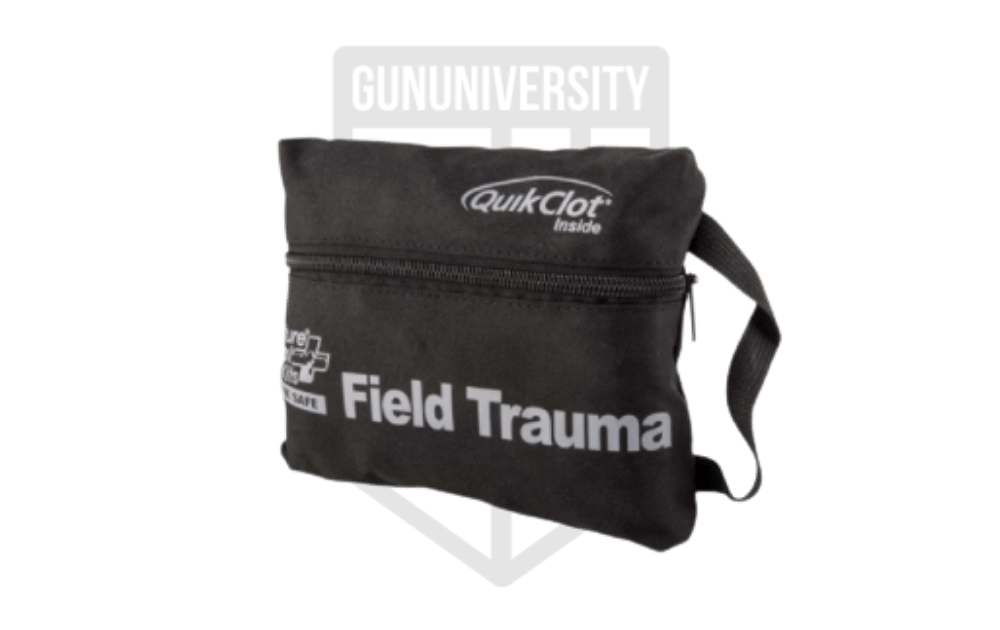
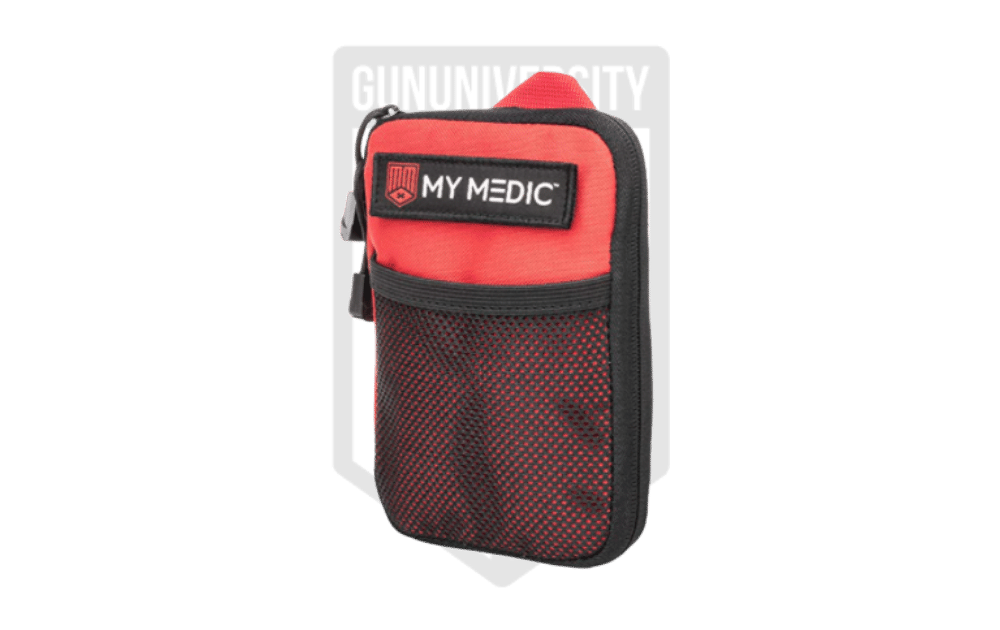
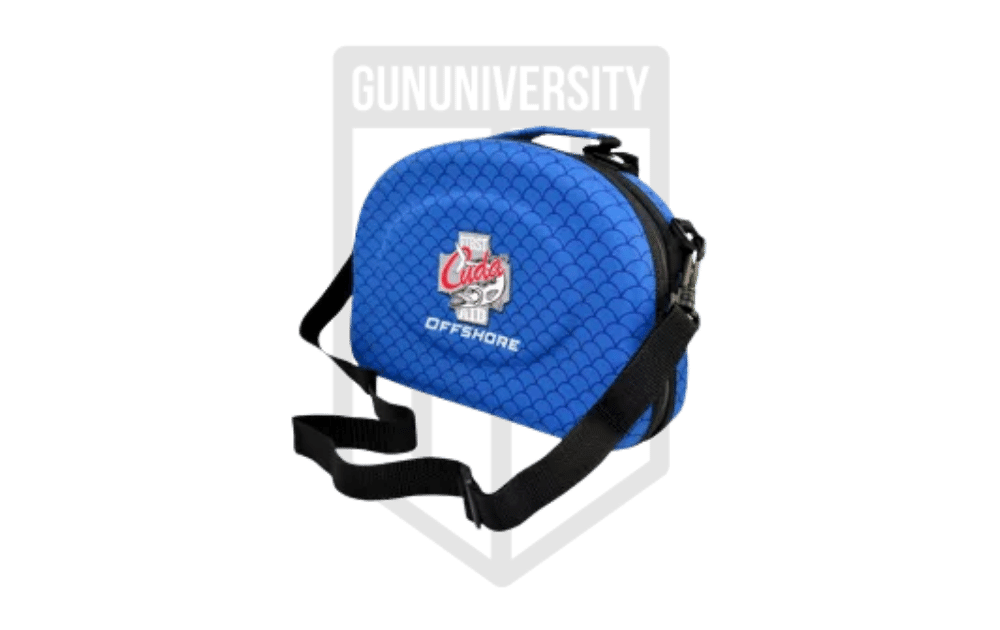
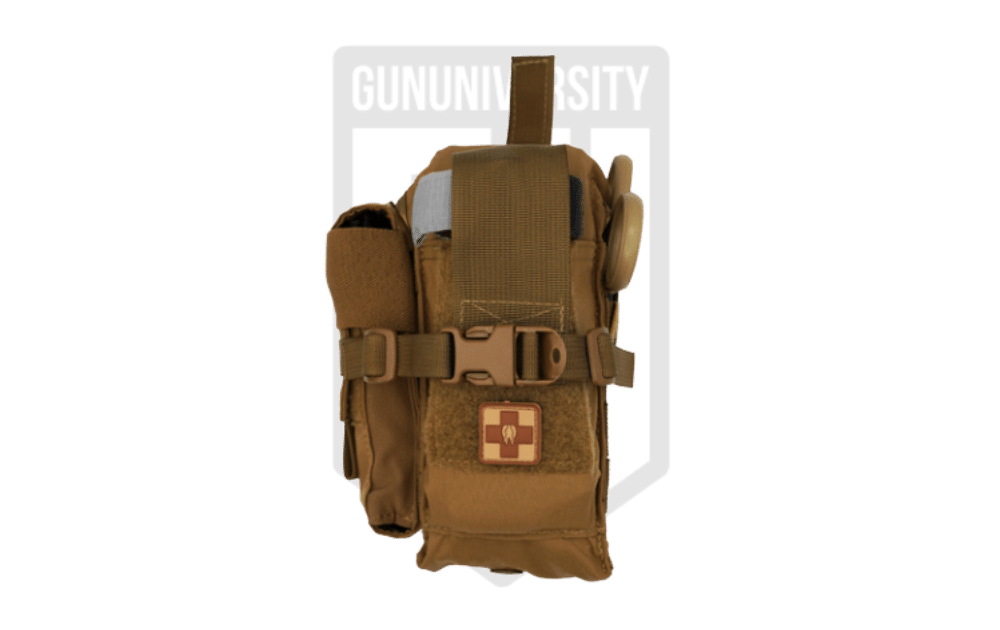
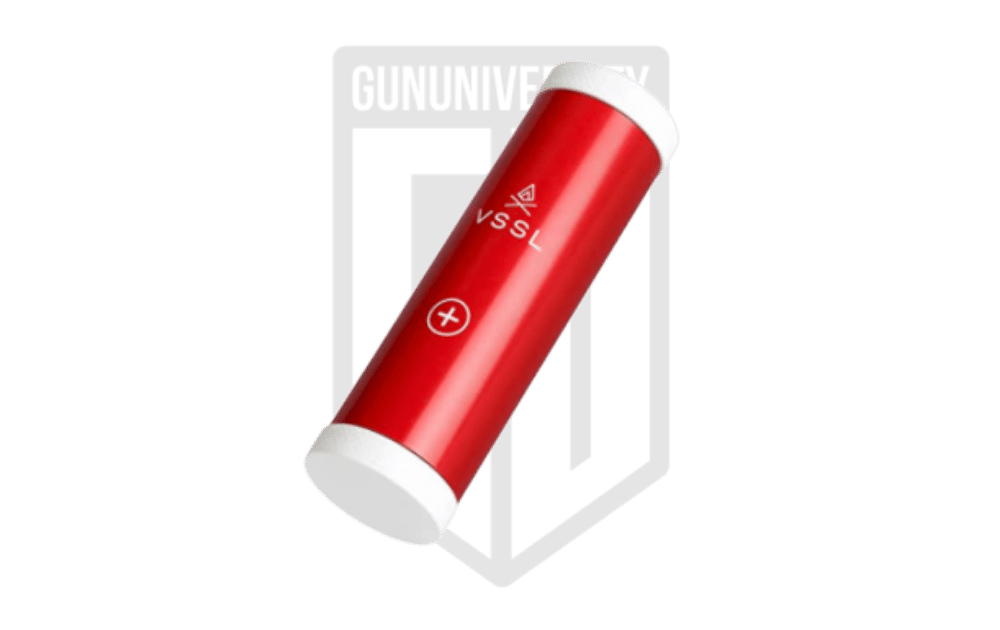
![Best Gifts for Gun Lovers [2025 – All Budgets]](https://gununiversity.com/wp-content/uploads/2021/01/Best-Gifts-for-Gun-Lovers.png)
